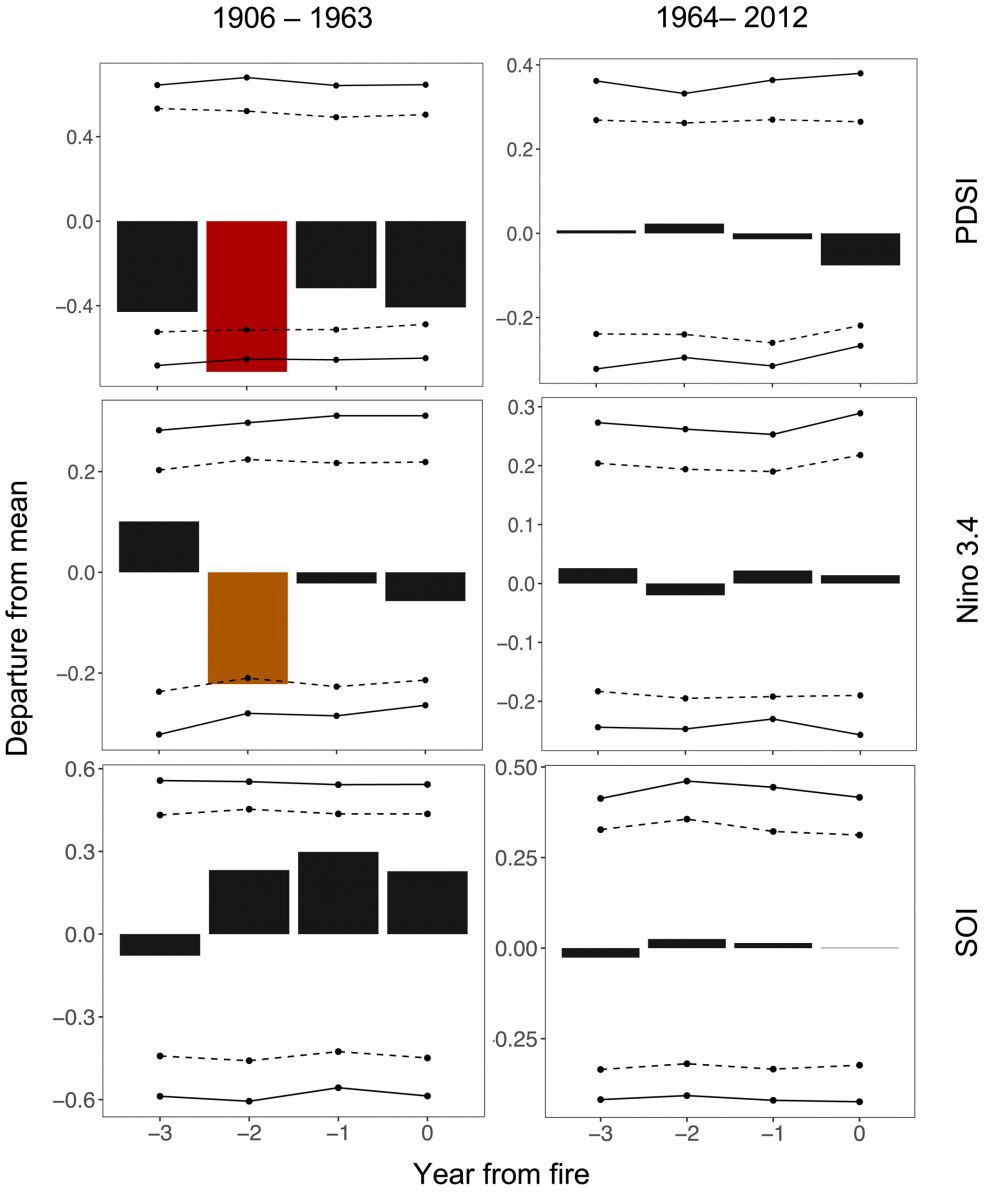Human-Driven Fire Regime Change in the Seasonal Tropical Forests of Central Vietnam
10.07.2023 -
By Thiet V. Nguyen1,2, Kathryn J. Allen1,3, Nam C. Le4, Cuong Q. Truong5, Karma Tenzin1, and Patrick J. Baker1
1School of Agriculture, Food, and Ecosystem Sciences, University of Melbourne, Melbourne, VIC, Australia
2Forest Science Institute of South Viet Nam, Ho Chi Minh, Vietnam
3School of Geography, Planning, and Spatial Sciences, University of Tasmania, Sandy Bay, TAS, Australia
4Forest Science Institute of Central Highlands and South of Central Vietnam, Dalat City, Vietnam
5Bidoup Nui Ba National Park, Dalat City, Vietnam.
Abstract
To better understand fire regimes and their relation to climate in the seasonal tropical forests of continental Southeast Asia, we developed the first multi-century tree-ring based fire history chronology for the region. The chronology included 776 fire scars collected at Bidoup NuiBa National Park (BNNP) in the Central Highlands of Vietnam and spans the period 1636–2020. Fires were recorded in 116 years, representing 47% of the years covered by the 249-year period between the first fire scar (1772) and the last (2020). While only 9% of years within the sampled BNNP forests experienced fires before 1905, 70% recorded fires between 1906 and 1963 and 90% showed evidence of fire after 1963. Fire occurrence was highly correlated with climate indices (wet season Nino 3.4 and dry season regional Palmer Drought Severity Index) during the period 1906–1963, but showed no significant correlation after 1963. Our fire reconstruction from BNNP suggests that the fire regime has shifted from one driven primarily by climate to one in which human activities dominate the occurrence of fire within these seasonal tropical landscapes.
Sources: Geophysical Research Letters, Volume 50, Issue 13
Link: https://doi.org/10.1029/2022GL100687
-
CÔNG BỐ QUYẾT ĐỊNH BỔ NHIỆM VIỆN TRƯỞNG VIỆN KHOA HỌC LÂM NGHIỆP NAM TRUNG BỘ VÀ TÂY NGUYÊN
30.11.2023 -
Human-Driven Fire Regime Change in the Seasonal Tropical Forests of Central Vietnam
10.07.2023 -
Ex Situ Conservation of the Endemic Wild Camellia in Vietnam
15.05.2023 -
NHÀ KHOA HỌC TÂM HUYẾT VỚI CÁC LOÀI CÂY BẢN ĐỊA
25.03.2023 -
GIAO LƯU KỶ NIỆM 113 NĂM NGÀY QUỐC TẾ PHỤ NỮ (NGÀY 08/3/1910 – 08/3/2023)
20.03.2023 -
THÔNG BÁO TUYỂN DỤNG
02.03.2023

